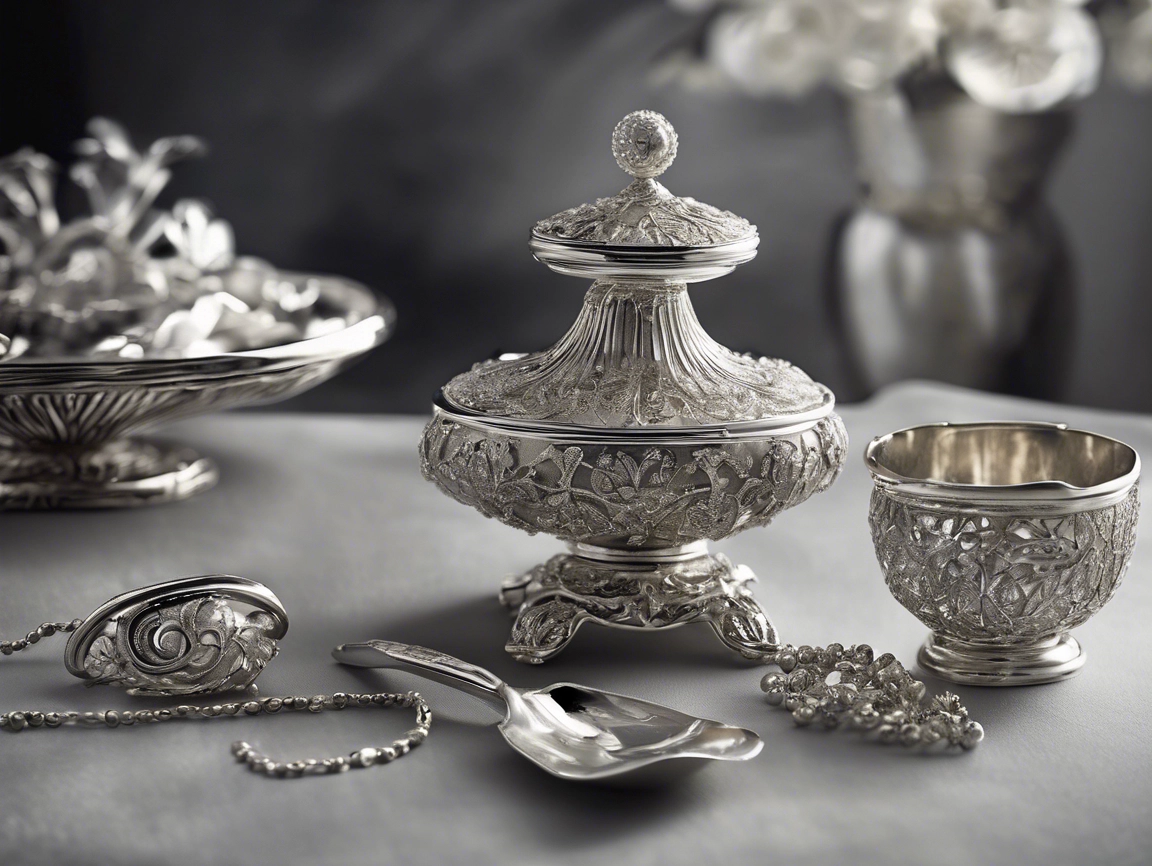
1. The History of Silver: A Metal of Civilization
Silver is one of the oldest known metals to humanity, and its use dates back to ancient civilizations. The earliest evidence of silver mining dates to around 3000 BC, with cultures such as the Egyptians and the Mesopotamians utilizing silver to craft jewelry, coins, and religious artifacts. Silver’s prominence continued through the ages—used by the Greeks, Romans, and various other cultures—for trade and decoration.
Over time, silver became one of the main metals used for coins, as it held intrinsic value and was easy to transport. In fact, the word “silver” comes from the Old English word “seolfor,” which was used to describe both the metal and coins made from it.
2. The Beauty of Silver: Why It Shines So Bright
One of the main reasons silver is so revered is because of its stunning shine. Silver has an alluring, cool white hue that shines brilliantly under light. Its reflective quality has made it a popular choice for fine jewelry, flatware, and decorative pieces.
When pure, silver has a bright, almost mirror-like quality that makes it an ideal choice for creating elegant designs in jewelry. However, pure silver is softer than other metals, which is why it is often alloyed with other metals such as copper to form sterling silver (92.5% silver and 7.5% copper), a more durable alternative.
3. Silver in Jewelry: Elegance That Lasts
Silver’s timeless appeal is evident in its extensive use in jewelry making. Whether it’s a simple silver ring, a pair of intricately designed earrings, or a statement necklace, silver continues to be a favorite among jewelers and consumers alike. Here are a few reasons why silver jewelry remains so popular:
- Versatility: Silver complements a wide range of gemstones, from diamonds to turquoise. It pairs beautifully with both casual and formal outfits.
- Affordability: Compared to gold and platinum, silver is a more affordable precious metal, making it accessible for a wider audience.
- Hypoallergenic Properties: Sterling silver is generally safe for people with sensitive skin, unlike other metals that may cause allergic reactions.
For these reasons, silver jewelry remains a staple in many collections, and its popularity continues to grow as new trends emerge.
4. Silver as an Investment: A Precious Commodity
Beyond its beauty and practical uses, silver also holds a significant place in the investment world. As a precious metal, silver is often viewed as a store of value, similar to gold, especially during times of economic uncertainty. Many people invest in silver through physical forms such as coins, bars, or jewelry, as well as financial products like silver ETFs (exchange-traded funds).
Why Invest in Silver?
- Hedge Against Inflation: Like gold, silver can act as a hedge against inflation. When fiat currencies lose value due to inflation, precious metals tend to retain their value.
- Industrial Demand: Silver has widespread use in industries such as electronics, solar energy, and medicine. As technology advances, the demand for silver in manufacturing and renewable energy applications continues to grow, potentially driving its price higher.
- Affordability: Silver is less expensive than gold, making it a more accessible option for investors looking to build a precious metals portfolio.
The growth of silver’s industrial applications, combined with its status as a safe-haven asset, makes it a compelling investment choice for those looking to diversify their portfolios.
5. Silver’s Industrial Uses: More Than Just Jewelry
Silver is also widely used in various industries due to its unique properties. As the best conductor of electricity and heat of all metals, silver plays a vital role in modern technology. Here are some notable industrial uses of silver:
- Electronics: Silver is used in a wide range of electronic products, including smartphones, computers, and televisions, thanks to its excellent conductivity.
- Solar Panels: Silver is a key component in photovoltaic cells for solar panels. Its high conductivity helps convert sunlight into electricity more efficiently.
- Medical Applications: Silver has antimicrobial properties, which is why it’s used in medical devices and wound dressings to prevent infection and promote healing.
The increasing demand for silver in technology and renewable energy sectors suggests that its industrial applications will continue to grow, further boosting its value.
6. How to Care for Your Silver
While silver is durable, it does require proper care to maintain its shine and prevent tarnishing. Here are a few simple tips to keep your silver pieces looking their best:
- Store Properly: Keep silver in a cool, dry place, away from humidity and direct sunlight. Use anti-tarnish pouches or cloths to protect your silver from tarnishing.
- Clean Regularly: Gently polish silver using a soft cloth to remove dirt and oils. If tarnish appears, use a silver cleaner or a baking soda paste to restore its shine.
- Avoid Harsh Chemicals: Keep silver away from chlorine, perfumes, and household cleaning agents, as these can damage the metal over time.
By following these simple care instructions, you can ensure that your silver jewelry and items retain their beauty for years to come.
7. Conclusion: Silver’s Enduring Legacy
Silver’s rich history, beauty, and versatility have made it one of the most prized metals in the world. Whether you’re buying a piece of silver jewelry, investing in silver bullion, or utilizing silver in industrial applications, this precious metal continues to captivate people across the globe.
With its unique combination of elegance, value, and practicality, silver remains an enduring treasure that will continue to shine for generations to come.
